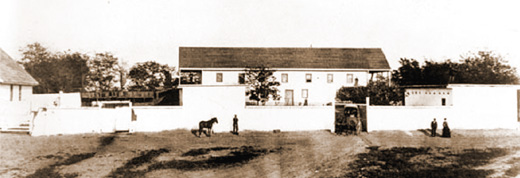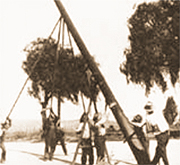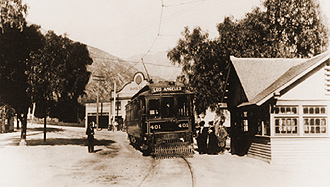Bellflower Chamber of Commerce Business Directory |
| For business or organization listing and advertising opportunities contact Bellflower Chamber of Commerce at (562) 867-1744. |
|
THIS IS AVAILABLE FOR ADVERTISING, CALL 562-867-1744 |
|
|
� |
THIS IS AVAILABLE FOR ADVERTISING, CALL 562-867-1744 |
| � |
|
� |
| Bellflower Chamber of Commerce |
| Chamber History |
Founded in 1906, Bellflower is a blend of residential, commercial, educational and cultural worlds located in the heart of southeast Los Angeles County. The proximity of Bellflower to other large and small urban areas as well as its major commercial arterial freeways and highways makes it an ideal place to do business. A recent infusion of local investment and new business has driven the city’s population to over 72,000; a more than 40% increase from 1980.
Bellflower was built by people of many backgrounds. Its early history began in 1784, as one of the first Spanish land grants conferred in California. Governor Pedro Fages rewarded Spanish leathercoat soldier Manuel Nieto with the largest of these grants. |
| � |
|
 |
| � |
| The three ranchos prospered through California’s Golden Age of the Ranchos, from the gold rush of the 1840’s into the 1860’s, when a terrible drought brought the rancho way of life to an end.
The ranchos were sold at auction to purchasers who, in addition to ranching, subdivided parts of them for small farming operations. The section that was to become Bellflower was subjected annually to terrible flooding from the San Gabriel River. If also had dense growth—willow, black berries, and bamboo—which meant that only the hardiest of farmers could settle here. And they did. |
| � |
 |
| By 1910, the business district began to develop. In 1913, Southern California Edison installed electric lines. In 1914, gas lines were brought into Bellflower. Up to 50 trains ran through the area each day to and from Los Angeles. The town was on its way. The only thing Bellflower lacked was a government. |
|
� |
| � |
After the Spanish were ousted in the Mexican Revolution, Nieto’s land grant was divided into five small ranchos which were distributed among his heirs. Bellflower would later be founded where the boundaries of three of these ranchos—Santa Gertrudes, Los Coyotes, and Los Cerritos—met.
Within a few years, the area was renowned for its large-sized crops. Fueled by the hard work and commitment of the early settlers, Bellflower’s poultry, dairy, horticultural, and farming industries steadily grew. Hispanic and American farmers were soon joined by Dutch, Swiss, Belgian, Japanese, and Portuguese families.
Following California’s tradition of strong support for education, the first thing these residents did was to petition for a school district. That was in 1908. In the next year, they asked for a post office. They quickly received both. The residents first asked for a post office under the name of Somerset. But postal authorities, wishing to prevent confusion, rejected the name because there already was a Somerset in Colorado. Another subdivision in the area was known as Bellflower Acres, and its proponents championed that name for the new community. Although it is not known precisely how the selection was made by the area’s residents, it was the one registered by postal officials. It is not certain how the name Bellflower came into the picture in the first place. The most common explanation links the name with the orchard of Bellefleure apples grown by pioneer settler William Gregory.
In 1912, Los Angeles County had adopted a charter covering the government of the unincorporated towns. Bellflower—with its unincorporated status—lived under county government for the next 45 years.
But the civic pride of Bellflower’s citizens was too strong to rely solely on Los Angeles County. Unable to form their own government, they organized the Bellflower Improvement Association in 1921 to serve as a representative body for all of the town’s organizations and interests. The improvement association has 12 members. The following year—indicating the enthusiasm and civic spirit that has always been the hallmark of Bellflower—the association’s membership had swelled to 80. That year--1922--it became known as the Bellflower Chamber of Commerce with R.J. Parsonson as president and a board consisting of Vice President Bruce Guernsey, Secretary J.C. Hertel, Treasurer C.A. Conrad, and Sergeant at Arms George McCormick.
Under the county’s governing of unincorporated communities, there was no local body officially charged with looking after the affairs of the town. The chamber quickly filled his vacuum, “governing” for over 30 years through an unofficial town hall.
Since the Chamber had no legislative authority to make its decision binding, its effectiveness depended upon how well it served the community. Those early chamber members worked hard to gain the trust and respect of the residents. This tradition continues today.
|
� |
 |
| With the establishment by the Pacific Electric Railway of the Somerset Station in 1902, Bellflower farmers were able to get their crops to markets and visitors were able to come to the Bellflower area via the “Big Red Cars”. Soon after, land developers began laying out streets and selling parcels of land near the Somerset Station. Soon a town grew up. Though the area was still unnamed—some called it the New River Colony, others Somerset Acres—the residents were determined to build a town. |
| � |
It was during the years of unincorporation—1921 to 1957, when Bellflower became California’s 348th city—that the area experienced impressive growth. Through the guidance of the chamber, Bellflower quickly became a highly respected and admired community.
One example of the chamber’s determination to keep Bellflower strong and vital was the erection of the “52 Day Miracle Building” in 1938. At that time, the Los Angeles County Building Department offices were located in Bellflower. However, the administrators were considering a move to Downey where rent was cheaper. The Bellflower chamber spearheaded a drive to keep the county’s offices in their town. With the chamber in the lead, local merchants provided funded to erect a new building. Incredibly, the project was completed—from idea to opening ceremonies—in just 52 days.
By the 1950’s, the population of Bellflower became so large and varied that it could no longer be adequately governed under the old county charter system. With the chamber leading the way, Bellflower received its certification of incorporation on September 3, 1957.
Today, the Bellflower Chamber of Commerce remains a vital, contributing member of our area. Its history reminds us that a city is not built with bricks, mortar, and asphalt alone. It comes to life and remains vibrant and healthy through the commitment, dedication, hard work, and strong values of its residents. The history of the Bellflower community and the leadership provided by the Bellflower Chamber of Commerce are models of these values. California and the United States are indeed fortunate to have Bellflower and the commitment of its citizens. |
|
Bellflower Chamber of Commerce, Partnering for a New Tomorrow
16730 Bellflower Blvd., Ste. A, Bellflower, CA 90706 | 562-867-1744 • F: 562-866-7545
� Copyright 2007. Bellflower Chamber of Commerce. All right reserved. |
|
|